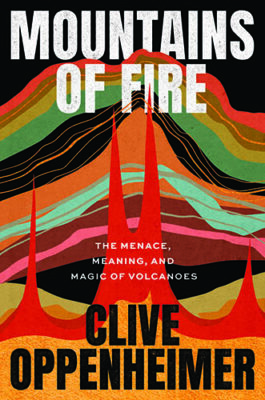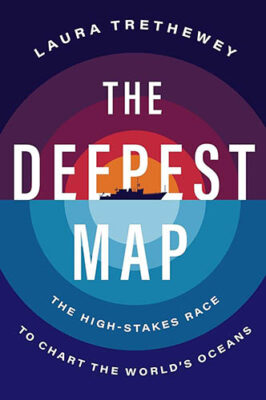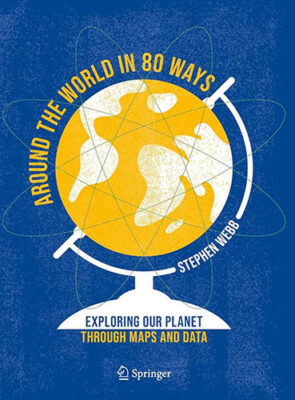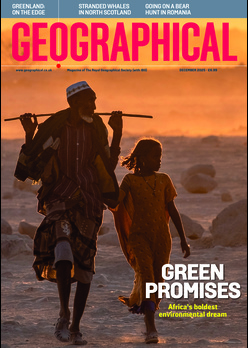
Fascinating maps, conservation success stories and menacing volcanoes feature in our list of the best books of 2023
From Laura Trethewey’s engrossing history of ocean exploration, to Maxim Samson’s engaging explanation of the invisible borders that influence our everyday lives, to Tim Marshall’s predictions for the future of space exploration, we reveal our pick of the best books of 2023.

Invisible Lines: Boundaries and Belts That Define the World by Maxim Samson
The modern world is divided by borders. Some, such as the mountainous frontier between France and Andorra, have remained unchanged for hundreds of years. Others, including the newly drawn boundaries of South Sudan, are much younger. They carve up our continents and influence the millions of people who live within them, but these lines aren’t the focus of Maxim Samson’s book, Invisible Lines. Instead, his interest lies in the many invisible boundaries that we constantly encounter and cross in our everyday lives, often without thinking about them, and how they shape how we act, feel and live.

The Future of Geography: How Power and Politics in Space Will Change Our World by Tim Marshall
In his latest analysis of international relations, our geopolitical columnist Tim Marshall turns his attention to the skies and the geopolitics of outer space, or ‘astropolitics’. We’re headed back to the Moon and this time we’re there to stay. Will it be a mission for the benefit of all humanity? Unlikely, says Marshall in his new book, The Future of Geography – at least, not unless we see a lot of changes, and we’re running out of time to make them.

Dust: The Modern World in a Trillion Particles by Jay Owens
Everything has the potential to become dust, given enough time. But Jay Owens’ focus is on the dust created by us, by our continued burning of wood and fossil fuels, by our production of microplastic particles and by our detonating of nuclear bombs. Some scientists think that the layer of artificial radionuclides (the fallout from nuclear weapons testing) that can be found in soils and ice around the world marks the boundary of a new man-made epoch, the Anthropocene. Whether or not you agree, there’s no denying that dust is a marker of our modern world, as Owens reveals in her fascinating new book.

The Earth Transformed: An Untold History by Peter Frankopan
As a young boy, Peter Frankopan, so spooked by the prospect of environmental catastrophe, kept a ‘just in case’ bag by his bed. It contained chocolate, a Swiss Army penknife and a deck of playing cards. In so doing, Frankopan was, perhaps unwittingly, responding as humans have throughout time to unfolding or perceived existential threats: muddling through, hoarding the resources of the day and hoping luck would go his way. To some extent, this is the theme of this absorbing and hugely ambitious book, which takes a look at how human history has been shaped by climate, geography and natural disasters.

Mountains of Fire: The Secret Lives of Volcanoes by Clive Oppenheimer
‘Volcanoes get a bad press,’ writes volcanologist Clive Oppenheimer in this entertaining deep dive into the history and science of volcanology. And, to be fair, it’s not hard to see why. From Pompeii to Montserrat via Mount Pinatubo, Vesuvius and Krakatoa, volcanic eruptions and the subsequent tsunamis, pyroclastic flows and mudslides have destroyed cities and killed tens of thousands of people. But Oppenheimer is keen to present another side to these awe-inspiring portals to the Earth’s roiling, incandescent interior – to show that ‘volcanoes mean more than menace and calamity’.

The Deepest Map: The High-Stakes Race to Chart the World’s Oceans by Laura Trethewey
We know more about the surface of the Moon than we do about our own ocean’s floor. Plotting all of the seabed that has been charted onto a map of the world is like plonking a matchbox on your kitchen floor. Yet this is only half the story, as Laura Trethewey’s engrossing book reveals. The Deepest Map charts the fascinating history of its extraordinary exploration, from heroic ventures into the unknown, to the Faustian pacts that scientists are obligated to make with the larger-than-life billionaire entrepreneurs who fund their research.

Five Times Faster: Rethinking the Science, Economics, and Diplomacy of Climate Change by Simon Sharpe
The title of Sharpe’s new book, Five Times Faster, refers to the urgency of our predicament. Are we making progress towards climate change targets and emissions reductions? Yes and yes, but momentum is juddering at best. ‘Glacial’ might be the go-to metaphor were it not for the fact that glacier melt is happening at an unprecedented pace. What we need, he argues, isn’t just a transition of infrastructure, from coal and gas to solar and wind, but a change in ideas and policy – before it’s too late.

Tenacious Beasts: Wildlife Recoveries That Change How We Think about Animals by Christopher Preston
‘More than 900 [species] have been wiped off the face of the Earth since industrialisation,’ writes Christopher Preston. ‘At least a million are threatened with extinction, many of which now number less than a thousand.’ But against this depressing backdrop, there are glimmers of hope – species that have stood on the brink of extinction before have been pulled back and nurtured, and are now thriving. In Tenacious Beasts, Preston considers what we can learn from these success stories, all the while unpacking some of the ethical and practical dilemmas that face conservation biologists caught up in an extinction crisis.

Around the World in 80 Ways: Exploring Our Planet Through Maps and Data by Stephen Webb
‘All maps lie’ is a bold premise upon which to base a book that uses maps and data visualisations to interpret the planet upon which we live. But Webb’s point is that those who discern conspiracy where the rest of us see science tend to have one thing in common, they refuse to accept that human activity can have an impact on the globe. In this fluent book, Webb looks at the world in 80 ways, using maps to show just what we are doing to the planet. Taken together, the maps paint a picture about the physical world and how people live on and affect it.




